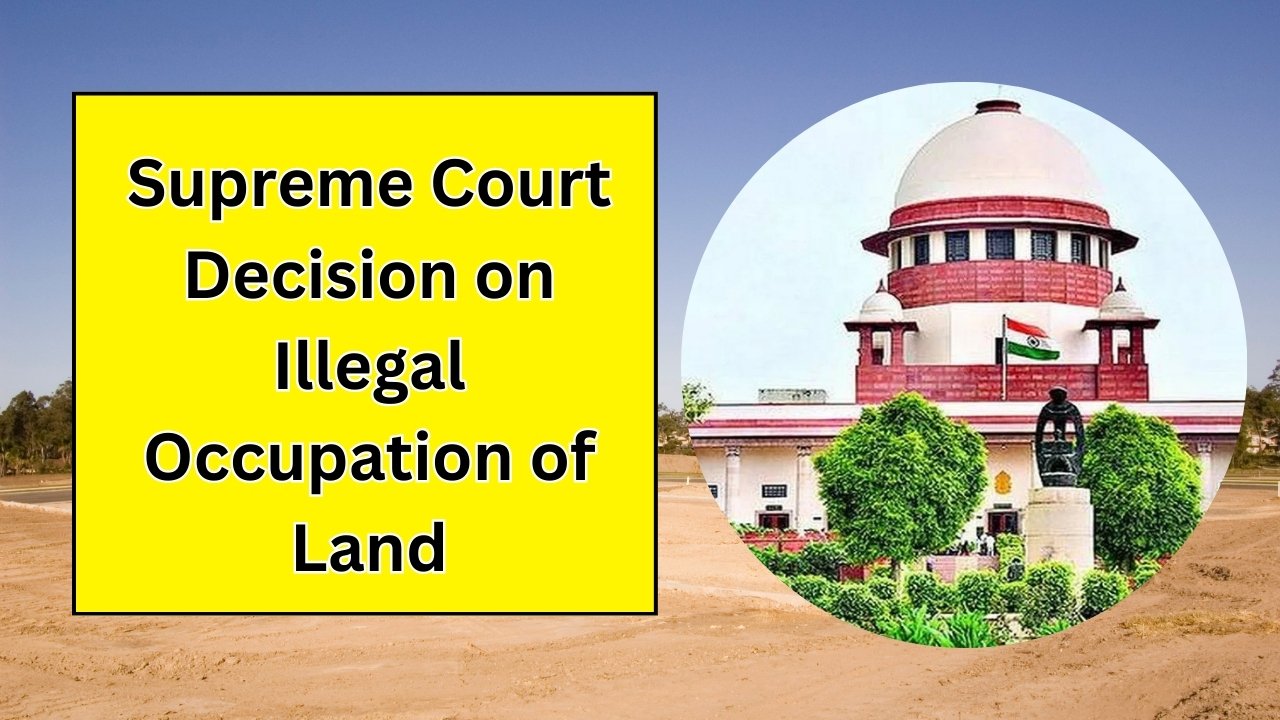Illegal land occupation is a long-standing problemthat is relevant worldwide and affects urban planning, environmental protection, and social justice. Next, the Supreme Court as a final arbiter in the judiciary has an important role to shape this predicament. Its decisions have clarified policies and laid out a roadmap for unauthorized land occupation matters in the ensuing years.
Emerging Land Grabbing Issue
Illegal land occupation is when individuals or groups freely occupy public land illegally by squatting on them, such as through illegal encroachment and etc. This usually means encamping on public or private land, including the government land, forest, and vacant land with little to no ownership. The actions are far-reaching, resulting in impacts on landowners, the government, and society altogether.
But in countries such as India this problem is more Accute because of their fast growing urban population and lack of cheap house. An estimate by the Ministry of Housing and Urban Affairs puts the number at more than 40 million people living in unauthorised settlements that are usually built after illegal encroachment on land. Also, a survey done by National Commission for the Scheduled Tribes showed that around 12 percent land in India is under illegal occupation thus making it a multi-faceted issue for policymakers and judiciary.
SC had no “other choice” but to clear illegal occupation of land
The Supreme Court has clarified the law regarding the illegal occupation of land, adopting a position which reflects both justice for all litigating parties but also takes into account wider policy considerations in relation to possession and the consequences upon landowners and members of the public alike. The Court has issued various landmark judgments on this subject over the years, advocating for respect of property rights, urban development, and upholding the rule of law.
Image Source : PTI FILEIn 2017, in perhaps one of the major judgments, the SC issued an order for expelling more than a million illegal settlers from forest lands in Uttarakhand. The illegal settlements, which were built on the protected areas, comprised an environmental threat and therefore the court decided to take action. That might not have been a popular decision, but it was the right one—by prioritizing environmental conservation and the rule of law over the interests of fossil fuel companies.
The case of Shantistar Builders v. Narayan Khimalal Todkar (1990) is another notable example where the Supreme Court stressed that no illegal act should be supported by anyone, and such laws must be enforced in relation to illegal occupation of land. Noting that misappropriating lands — the illegal acts of appropriation which are detrimental to anyone but especially those who struggle every day — cannot be condoned, it said only a process established by law can grant land.
Court has also faced cases on squatters, where it sided with private property owners that their right to the land should be enforced, and those without titles should be ejected only by virtue of law. It also repeatedly ordered local authorities to take steps for immediate removal of encroachment and restore the land back to its rightful owners in a number of judgments.
ILLEGAL LAND OCCUPATION: THE IMPACTS
Illegal land occupation often has dire consequences both on the people perpetrating it and society as a whole. For those who occupy land without legal justification, eviction, fines and court rulings are the penalties. Some may even be jailed for continuing to refuse court rulings. In addition to this, informal settlements are frequently deprived of crucial infrastructure including clean drinking water, sanitation and a consistent stream of electricity which can severely damage their health whilst fuelling widespread civil unrest.
Illegally seizing land, on the other hand, can result in deforestation of forests, wetlands or destroying natural resources from an environmental perspective. This has been recognised as a threat by the Supreme Court also, which in many cases have directed removal of encroachments in ecologically sensitive areas.
For landowners, it means losing out on the money they could be making from their property as well as stalling business development/project developments. It also makes it more difficult to sell the property where ownership over the land is contested. This could pose a difficulty in real estate markets where certainty on land titles is a key economic enabler to facilitate investment and development.
The Future: Legislative Action and Implementation
Though it has laid down the law against land grabbing, ending illegal possession of property will take time. Experts said a better legal foundation with clearer rules is necessary to avoid encroaching on rights in the first place. It is also important to have enforcement mechanisms established and ready to implement court orders immediately.
Educating the general public is also a key part. Oftentimes, the illegal occupation of land stems from ignorance surrounding property rights and legal recourse. A massive awareness campaign, especially in undeveloped regions, will cut down incidents of illegal encroachment.
Conclusion Supreme Court Decision on Illegal Occupation of Land
Ever since, the Supreme Court has reiterated that illegal occupation of land cannot be condoned under the pretext that high-profile personalities had built structures on such property — in violation of law that is supposed to protect property rights so crucial for civil order. Through an equilibrium between personal rights and the need for environment preservation and urban growth, the Court has allowed a more systematic and sustainable land utilization policy. Despite the challenges, these judicial decisions represent an important basis for future developments in dealing with illegal land occupation.
If the laws are continually reformed and enforced, illegal land occupation should decline, providing lands for unprivileged communities to use as urban space while achieving a more equitable distribution of land resources.
